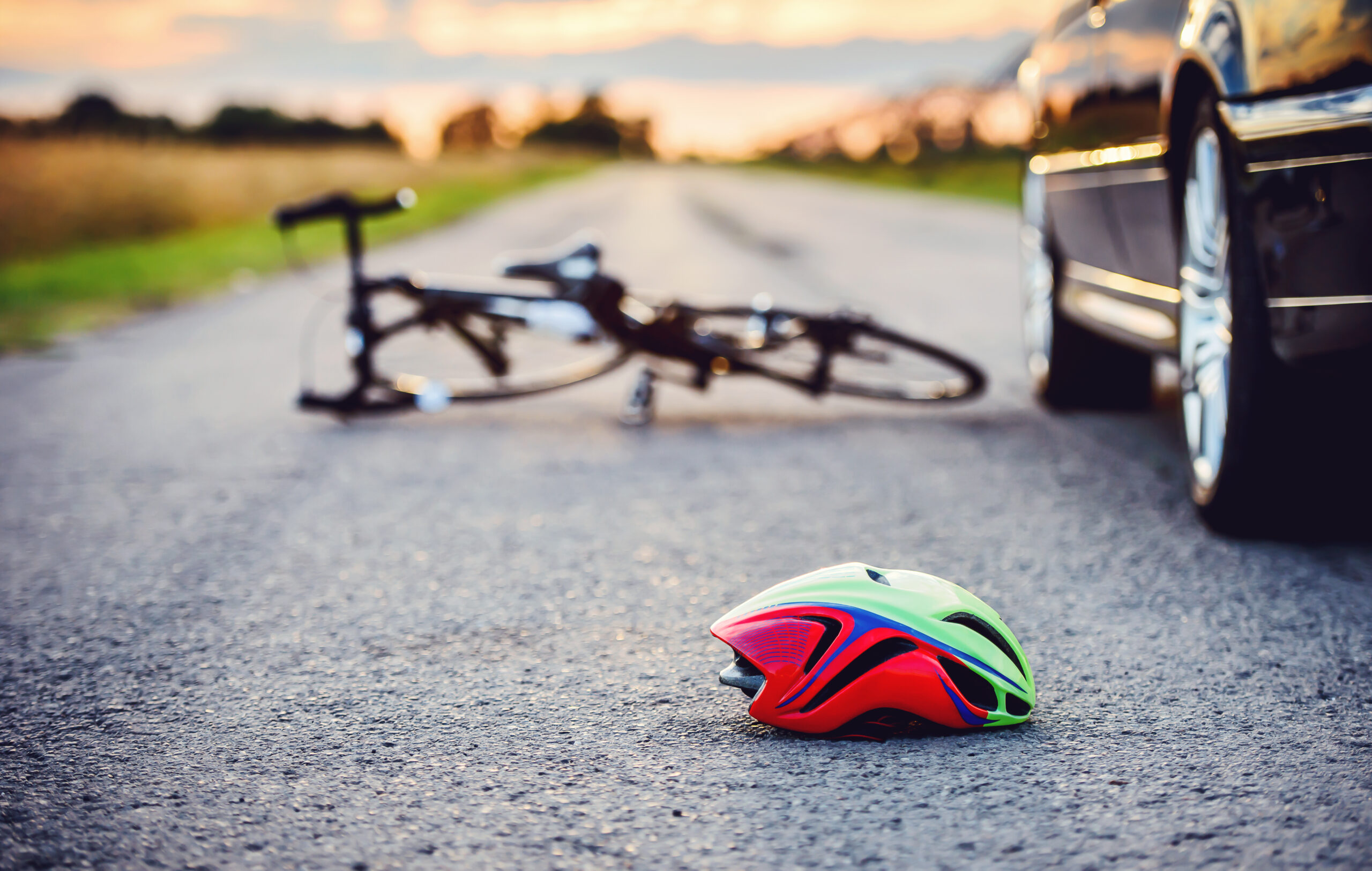Top Tips for Handling a Bicycle vs Auto Accident
Legal Representation for Cyclists Involved in Auto Collisions
With bicycle vs auto accident occurrences on the rise, understanding what to do after a collision is vital. In this article, you’ll learn the immediate steps to take, the legal rights and responsibilities involved, and key safety tips to avoid future accidents involving a bicycle vs auto accident.
Quick Links
Key Takeaways
- The number of bicycle vs. auto accidents has risen significantly, emphasizing the need for both cyclists and motorists to be more aware of safety practices and legal responsibilities.
- Understanding the common causes and types of bicycle vs. auto collisions, such as driver negligence and inadequate infrastructure, can help prevent accidents and ensure better road safety.
- Involving a bicycle accident lawyer can be crucial for securing fair compensation, as they can navigate local laws, demonstrate fault, and negotiate with insurance companies on behalf of injured cyclists.
Introduction
Every year, around 2% of motor vehicle crash fatalities involve bicyclists, a figure that should give us all pause. In 2022, a staggering 1,084 bicyclists lost their lives in collisions with motor vehicles, the highest number on record. This spike in fatalities, representing a 75% increase since 2010, underscores a critical need for better awareness and education regarding bicycle safety and legal responsibilities.
The statistics are sobering: approximately 50,000 cyclists suffer injuries on American roads each year, a testament to the vulnerability of those on two wheels compared to those in motor vehicles. Rush hour, a time when traffic is at its peak, is particularly perilous for cyclists, highlighting the importance of vigilance and adherence to safety practices during these periods.
Given these circumstances, familiarizing oneself with the law concerning bicycle vs. auto accidents becomes crucial. Both cyclists and motorists must be aware of their rights and duties to foster a safer environment. Knowledge is a powerful tool in preventing accidents and ensuring that, when they do occur, the injured parties can seek the justice and compensation they deserve.
Understanding Bicycle vs Auto Accidents
Bicycle accidents are a significant concern, with cyclists often facing severe consequences when involved in collisions with motor vehicles. Each year, around 2% of motor vehicle crash fatalities involve bicyclists. In 2022, an unprecedented number of 1,084 cyclists were killed in such accidents, highlighting the critical need for understanding these incidents. The increase in cyclist deaths by 75% since 2010 further emphasizes the gravity of the situation.
Comprehending the dynamics of bicycle vs. auto accidents proves instrumental in ensuring road safety and legal adherence. This understanding not only aids in preventing accidents but also prepares cyclists and drivers to handle incidents effectively. The following sections will delve into the common causes and types of these accidents, providing a comprehensive view of the challenges faced by cyclists and the measures that can be taken to mitigate risks.
Common Causes of Bicycle vs Auto Accidents
Bicycle accidents often stem from a mix of driver negligence and infrastructural shortcomings. One of the most common causes is motorists failing to yield to cyclists. This failure can result from distracted driving, where drivers are not fully attentive to the road and their surroundings. Drivers must stay alert and steer clear of actions that could pose a threat to cyclists.
Another frequent cause of bike accidents is inadequate infrastructure. Many roads are not designed with cyclists in mind, lacking proper bike lanes and safe passageways. This absence forces cyclists to share the road with motor vehicles, increasing the likelihood of collisions. Cyclists also need to adhere to safe riding practices, such as avoiding riding against traffic, which is a common error leading to accidents.
Moreover, simple actions like drivers extending their arms when opening car doors can prevent dooring incidents, a common and often severe type of collision where cyclists are struck by car doors. Comprehending these causes is vital for both drivers and cyclists to enhance safety and diminish the incidence of severe injuries on the road.

Types of Bicycle vs Auto Collisions
Bicycle accidents frequently occur at intersections and stop signs, where the dynamics of right-of-way come into play. These collisions often happen when a cyclist, who has the right-of-way, is struck by a car approaching the intersection without a stop sign, leading to a serious bicycle accident.
These scenarios underscore the necessity of alertness and compliance with traffic signals by both cyclists and drivers to avert accidents and secure safety on the roads.
Legal Rights and Responsibilities
In the United States, both cyclists and motorists are bound by the same traffic laws, which mandate careful driving and sharing the road responsibly. Cyclists typically have the same rights and responsibilities as motor vehicles, meaning they must adhere to traffic signals and signs just like drivers. State and local laws, such as California bicycle laws, permit cyclists on various types of roads, although freeways and interstate highways are generally off-limits for bicyclists.
Both parties must drive cautiously and follow traffic laws to prevent accidents. A cyclist may be held liable for injuries and damages if they cause an accident, and as a result, they can be sued by a driver or pedestrian. Comprehending these legal rights and responsibilities is vital for both cyclists and drivers to ensure safer road coexistence.
Cyclists' Legal Rights
Cyclists have the right to use roadways and bike lanes, and they must be treated with respect by other road users. Legally, cyclists are allowed to use a bike lane where available and are protected by laws such as the three-foot passing law, which mandates a safe passing distance. These laws are designed to safeguard cyclists from negligent drivers.
Cyclists must adhere to the same traffic laws as motor vehicles, which includes stopping at red lights and obeying road signs. This adherence ensures that cyclists fulfill their duty of care on the road, just as drivers do. Bicyclists have the same rights and responsibilities as motorists, which means they can occupy a full lane and should be given the same consideration as any other vehicle on the road.
Cyclists must be cognizant of these rights to protect themselves and secure fair treatment in the event of an accident.
Knowing their legal entitlements can help cyclists navigate the roads more confidently and safely.
Drivers' Responsibilities
Drivers have specific responsibilities to ensure the safety of cyclists on the road. One of the most critical duties is to provide a safe passing distance when overtaking cyclists, legally defined as a minimum of three feet of clearance in California. This buffer zone helps prevent accidents and gives cyclists room to maneuver safely.
Drivers must also operate their vehicles safely, following all traffic laws and being constantly aware of their surroundings. This includes avoiding distracted driving and being vigilant when opening car doors to prevent dooring incidents. By undertaking these responsibilities, drivers play a pivotal role in reducing bike accidents and fostering a safer environment for all road users.
Steps to Take After a Bicycle vs Auto Accident
In case you get involved in a bicycle vs. auto accident, it’s imperative to take swift and suitable actions to secure your safety and defend your rights. Here are the steps you should follow:
- Move to a safe location, if possible, to avoid further harm.
- Get medical attention by calling 911, even if injuries seem minor.
- Wait for the police to arrive.
Taking photo evidence of the scene, making detailed notes about the accident, and getting the names and contact information of witnesses and drivers involved are essential steps in documenting the incident.
Immediate Actions at the Scene
In the immediate aftermath of an accident, if you’re capable, dial 911 and distinctly communicate your location and the nature of the accident. Request medical assistance or an ambulance if needed. It’s also important to exchange contact and insurance details with the other party involved in the accident.
Take photographs of the accident scene, involved vehicles, and any visible injuries for documentation. After ensuring your safety, wait for emergency services and avoid unnecessary movement if injured. These steps are crucial in building a strong case for insurance claims and potential legal action.
Seeking Medical Treatment
No matter how minor your injuries appear, it’s crucial to promptly seek medical attention. Visiting an emergency room or urgent care facility ensures that any injuries are properly diagnosed and treated.
Documenting all injuries, including serious injuries, and keeping detailed medical records are vital for legal and insurance purposes.
Reporting the Accident
Obtaining an official police report is crucial for your insurance claim and any potential legal action. Provide a clear and factual account of the accident to the police without admitting fault.
Ask for a copy of the police report, as it will be essential for any insurance claims or legal proceedings.
Determining Fault in Bicycle vs Auto Accidents
Determining fault in bicycle vs. auto accidents often hinges on whether one or both parties acted negligently, breaching their duty of care. This involves evaluating whether the driver failed to yield, was inattentive, speeding, intoxicated, or engaged in aggressive driving. Conversely, negligence on the part of the cyclist, such as running a red light or riding against traffic, can also result in the cyclist being found at fault.
In some cases, other entities like municipalities or third parties may be at fault due to road defects or hazardous conditions. A holistic approach to determining fault includes considering the actions of both parties, external factors, and any available evidence. This comprehensive assessment is vital for determining liability and seeking compensation.
Role of Evidence
Evidence plays a pivotal role in determining fault in bicycle accidents. Photographs of the accident scene, including skid marks and traffic signals, can provide crucial proof of the circumstances leading to the accident. Videos, such as dashcam footage and surveillance footage, offer an objective view of the events.
Collecting contact information from witnesses is also vital, as their statements can support your version of events.
Police Reports and Insurance Claims
Police reports provide an official account of the accident and an initial determination of fault, which is invaluable for insurance claims. These reports contain critical information such as witness statements and citations that can influence fault determination. Obtaining a copy of the police report is essential, as insurance companies heavily rely on these documents to process claims and determine payouts.
When dealing with insurance companies, it is crucial to avoid making any statements that could be interpreted as an admission of guilt. Insurance companies often rely on police reports to assess fault and settle claims following a bicycle vs. auto accident. It’s advisable to consult with a lawyer before discussing fault with the insurance company.
Compensation for Injuries and Damages
Injured cyclists may be entitled to various types of compensation, including:
- Medical expenses
- Lost wages
- Pain and suffering
- Property damage
- Permanent disability
- Future medical bills
- Punitive damages
The type and amount of compensation depend on who caused the accident, the circumstances, and the nature of the injuries. Recovering compensation can involve filing an insurance claim or a civil lawsuit, depending on the circumstances.
Understanding the different forms of compensation available is crucial for injured cyclists seeking justice and financial recovery. The following subsections will delve into specific types of compensation, including medical bills, property damage, and pain and suffering.
Medical Bills and Rehabilitation Costs
Cyclists can recover medical costs for both minor and severe injuries, including emergency room visits, surgeries, and long-term medical supervision. Compensation for medical expenses can cover emergency treatment, hospital stays, surgeries, medications, rehabilitation, and ongoing medical care.
Future medical bills are also considered for anticipated expenses related to ongoing treatment and therapy.
Property Damage
Cyclists can recover costs for damaged bicycles and personal items such as cell phones, smartwatches, glasses, helmets, and backpacks. Property damage claims can include not only the bicycle but also other belongings that were destroyed in the accident.
This compensation ensures that cyclists are not financially burdened by the loss of their personal property due to an accident.
Pain and Suffering
Compensation for pain and suffering includes non-economic damages like:
- Emotional distress
- Anxiety following the accident
- Physical pain
- Loss of enjoyment of life
These damages can be challenging to prove and often require thorough documentation of the emotional and psychological impact.
Why You Need a Bicycle Accident Lawyer
Engaging a bicycle accident lawyer is essential for constructing a robust personal injury claim and guaranteeing just compensation. A specialized lawyer can:
- Understand local laws and demonstrate the other party’s fault in bicycle accidents
- Calculate your accident damages, including both special damages like medical bills and general damages like pain and suffering
- Work on a contingency basis, which means you only pay if you win your case
Lawyers from reputable law firms in Los Angeles, such as the Dolan Law Firm, often offer these services.
A lawyer can provide the following services for you:
- Negotiate with the insurance company on your behalf to secure a fair settlement
- Advocate for your rights and ensure that you receive the compensation you deserve
- Handle all the legal paperwork and documentation related to your claim
- Provide guidance and support throughout the entire claims process
Having an experienced attorney negotiate for you is essential because insurance companies aim to deny or minimize claims to maximize profits. The Dolan Law Firm, for instance, has a track record of over $10 million in recoveries for injured bike riders. They provide free case reviews with no obligation, making it easier for you to get started on your claim.
Expertise in Bicycle Accident Cases
An experienced bicycle accident lawyer, also known as a bike accident lawyer, possesses the knowledge and expertise to handle legal cases involving bicycles. They understand local laws and know how to demonstrate the other party’s fault effectively. Specialized bicycle accident lawyers have years of experience working on bicycle accident cases, ensuring they can represent injured cyclists competently and thoroughly.
Negotiating with Insurance Companies
Most insurance companies will initially offer a lowball settlement, but a lawyer can negotiate to ensure you receive compensation that covers all your expenses. Lawyers are skilled in negotiating with insurance companies, aiming to reach a fair settlement without the need for a trial. This expertise can make a significant difference in the outcome of your case.
Bicycle Safety Tips to Prevent Accidents
The prevention of bicycle accidents begins with compliance to traffic laws and donning suitable protective gear. Cyclists should always ride in the same direction as traffic and use designated bike lanes whenever available. Paying attention to traffic signs and signals, such as stopping at red lights and using proper hand signals, is crucial for maintaining safety.
Visibility is also key to preventing accidents. Here are some tips to increase visibility while cycling:
- Use bright lights on the front and back of the bicycle, especially at night.
- Wear reflective clothing and helmets to be seen by motorists.
- Helmets are essential for protecting against head injuries in case of an accident. In fact, 62% of bicyclists killed in 2022 were not wearing helmets.
Adhering to Traffic Laws
Heeding traffic signals and biking in the same direction as the traffic can notably diminish the risk of accidents. Running red lights and riding against traffic are common mistakes that can lead to severe injuries and legal repercussions for cyclists.
Adhering to traffic laws ensures the safety of all road users and helps prevent accidents.
Visibility and Protective Gear
Employing bright lights, donning reflective clothing, and helmets are essential for enhancing visibility and safeguarding against injuries. These measures help cyclists be seen by motorists and provide essential protection in case of an accident.
Helmets, in particular, are vital for preventing head injuries, which are common in bicycle accidents.
Summary
In conclusion, understanding the legal rights and responsibilities in bicycle vs. auto accidents is essential for both cyclists and motorists. By adhering to traffic laws, using protective gear, and knowing the steps to take after an accident, we can all contribute to safer roads. Hiring a specialized bicycle accident lawyer can ensure fair compensation and proper legal representation in the event of an accident. Let’s work together to make our roads safer for everyone.
Frequently Asked Questions
After a bicycle vs. auto accident, the first thing you should do is move to a safe location, call 911, exchange contact information, and document the scene with photos while waiting for the police to arrive.
You can receive compensation for medical expenses, lost wages, pain and suffering, property damage, and more after a bicycle accident.
You need a bicycle accident lawyer to effectively build a strong personal injury claim, negotiate with insurance companies, and ensure fair compensation for your case.
Fault in bicycle vs. auto accidents is determined based on negligence, duty of care, and available evidence like photos, videos, and witness statements. This helps to establish who was at fault and to what degree in the accident.
To prevent bicycle accidents, it’s important to follow traffic laws, wear protective gear, use bright lights and reflective clothing for visibility, and keep your bike well maintained. Stay safe out there!


